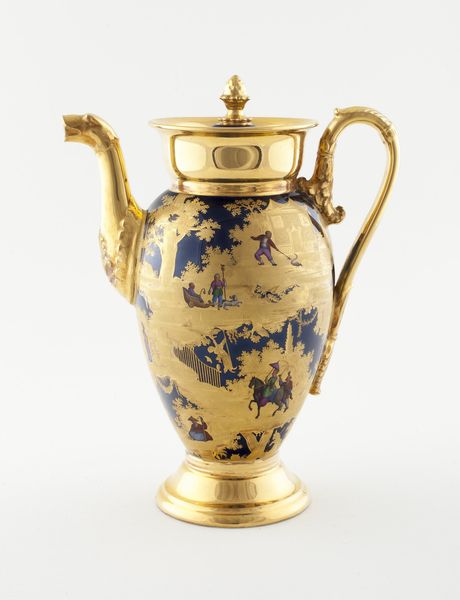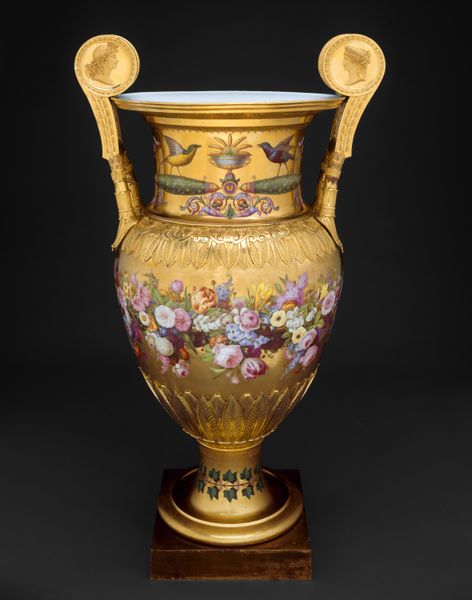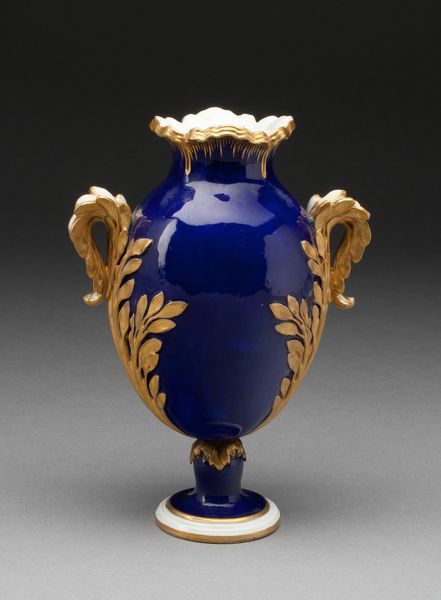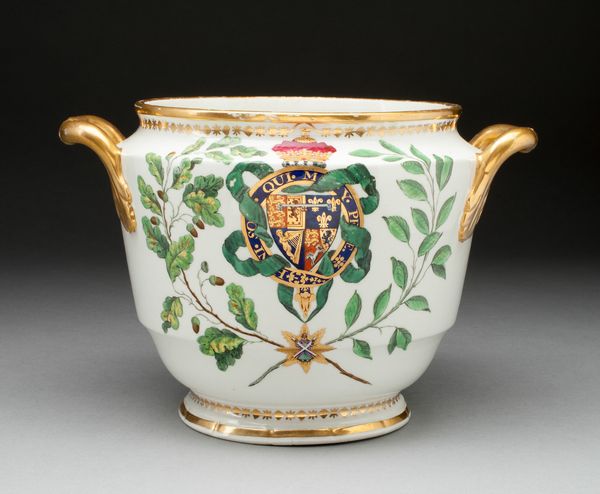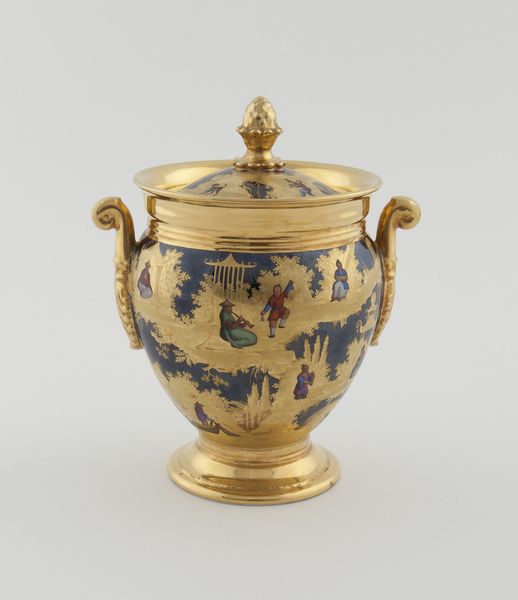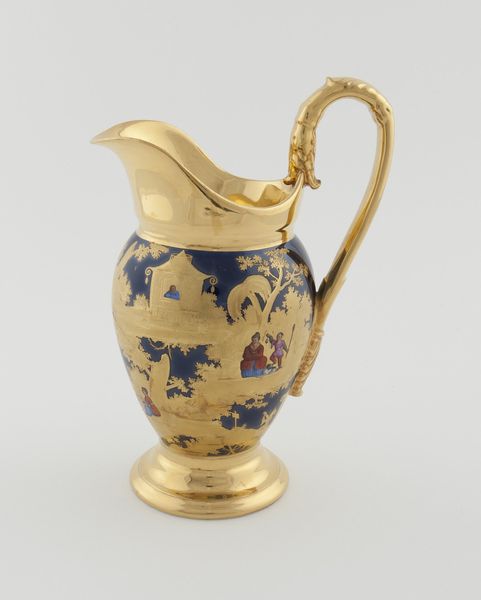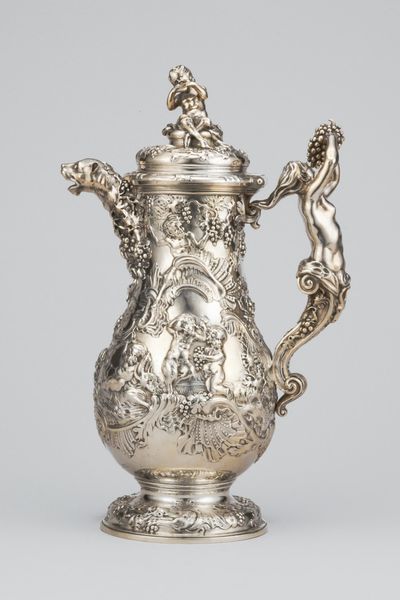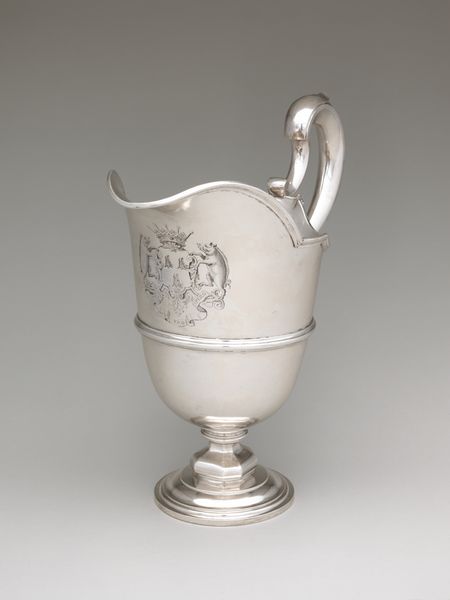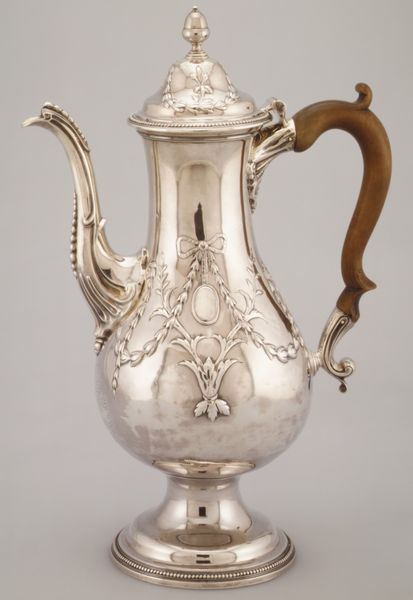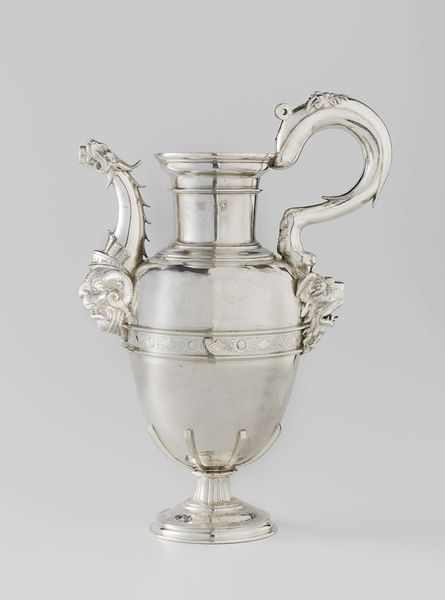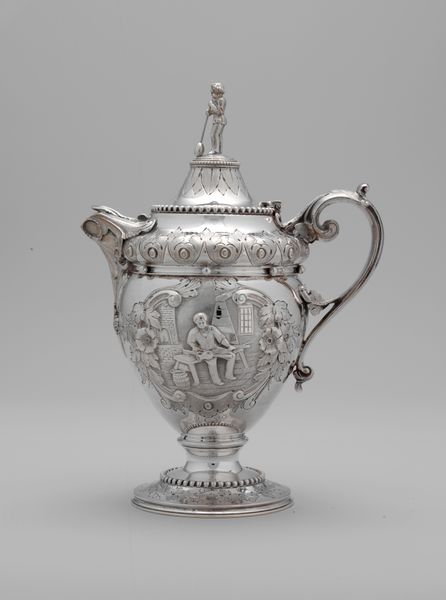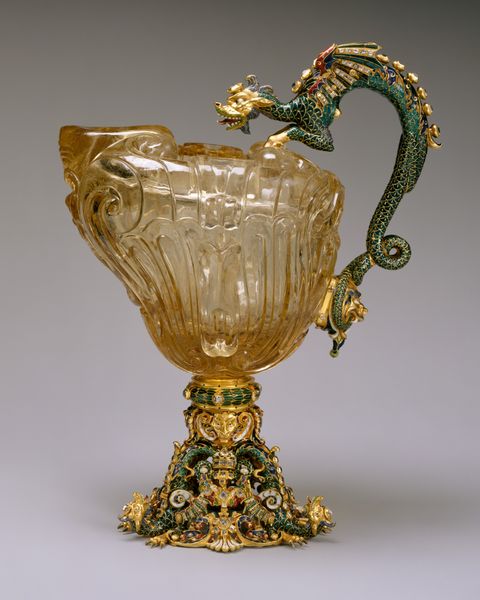
ceramic, sculpture
#
decorative element
#
ceramic
#
mannerism
#
sculpture
#
ceramic
#
decorative-art
#
italian-renaissance
Dimensions: Height: 10 1/8 in. (25.7 cm)
Copyright: Public Domain
Editor: This is an Italian ceramic ewer, created between 1585 and 1600, currently held at the Metropolitan Museum of Art. It’s quite elaborate; the ornamentation feels visually busy, though the color palette is cohesive. What catches your eye about this piece? Curator: Indeed, the ornamental schema is quite pronounced. I am immediately drawn to the interplay between the vessel's form and its surface decoration. Observe the pronounced curves of the body contrasted with the angularity of the handle and spout. How does this tension affect your perception of the ewer's functionality? Editor: It does make me wonder if it’s more for show than actual use! The handle looks rather delicate. I guess I'm curious about the artist's purpose with these choices, playing with tension in both form and ornamentation. Curator: Precisely. Note how the vibrant palette – the blues, yellows, greens – is meticulously deployed to accentuate key structural elements, guiding the eye around the object and further highlighting its design. The repeating floral and foliate motifs add visual texture, but what compositional role do they play? Editor: It seems like those elements create depth. The dark outlines surrounding the flora set against lighter backgrounds almost makes the decorations seem like they're popping out. It adds another layer to that tension we mentioned. Curator: I agree. Now, consider the way the artist utilizes the verticality of the object, from its base to the lip, creating a rising rhythm through carefully placed patterns. Are there other examples of such directional focus in similar period works? Editor: I will have to explore that connection! It is remarkable to consider the work as both an object of function and aesthetic form; thanks for offering this perspective! Curator: A formal analysis such as this helps sharpen the eye. I leave with a new appreciation of symmetry, as well as asymmetry.
Comments
No comments
Be the first to comment and join the conversation on the ultimate creative platform.
